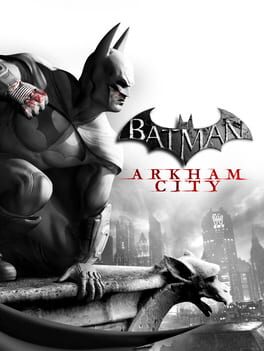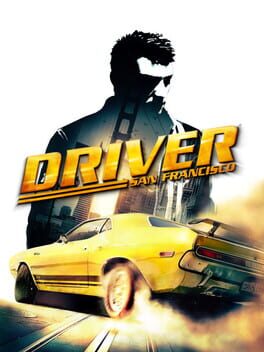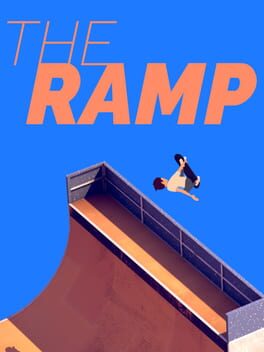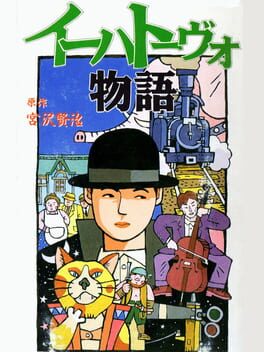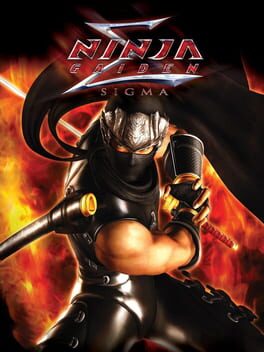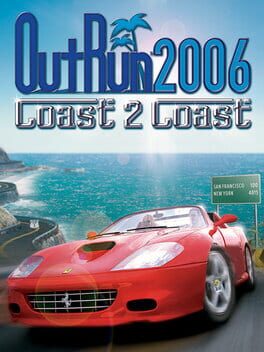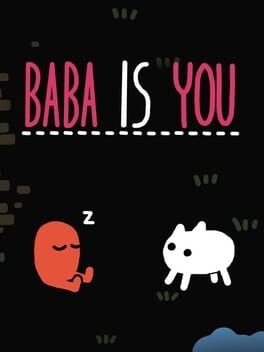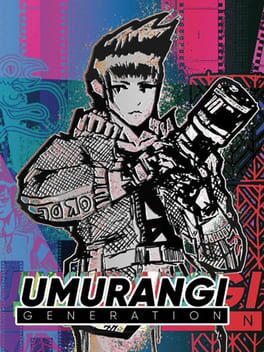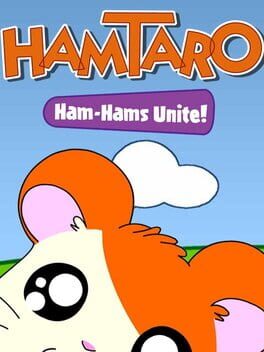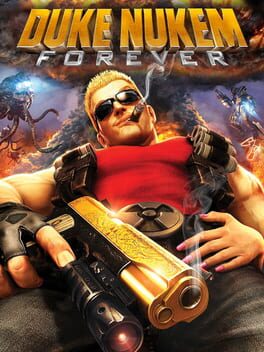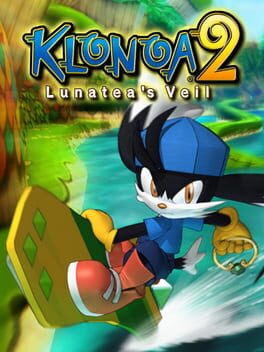megahouten
334 Reviews liked by megahouten
Batman: Arkham City
2011
80% of action video games make you feel like a superhero, from stunt plumbers to teenage girls with boomerangs (Kya) or robber raccoons who operate M: I style, so the "feel like superhero" thing is
somewhat innocuous words for me.
We all know that the poor sociocultural conception of video games relegates superhero licenses to being embedded in the most obvious ways, such as platforms or beat em ups, always losing an important part along the way of what makes them special , superpowers or politics, and fact is that arkham city is not that different in substance. Asylum was a hybrid of melee combat, stealth and puzzles, in a relatively controlled environment that was explored in a monitored way through multifunctional gadgets that served as a key, not unlike a contemporary production of Nintendo or Ubisoft.
With a setting on the way between the comic of the long halloween and John Carpenter's escape from new york, rocksteady packages the most recognizable aesthetic of batman in the pop scene and, as did the animated series, it translates it into modern pop video game language. but although the result has charm, and doesn't seem to want to bloat with hours of content, does not evade some bad avenues of the AAA scene
This is the batman for a new generation, adapts the character without complexities or obstacles to a language that until 2011, never found a way to do it properly. at the same time, it is an x-ray of modern video games
_________________________________________________________
what’s missing from contemporary video Games culture? I would say it is integrity, a lot if we talk about pop video games of the 2010s. Maybe it was the fault of the Great Recession or maybe it was the increase in costs in the productions of the HD era? The thing is that little by little we begin to demand content for content, if bigger, prettier, for more hours, the better. The next we already know
somewhat innocuous words for me.
We all know that the poor sociocultural conception of video games relegates superhero licenses to being embedded in the most obvious ways, such as platforms or beat em ups, always losing an important part along the way of what makes them special , superpowers or politics, and fact is that arkham city is not that different in substance. Asylum was a hybrid of melee combat, stealth and puzzles, in a relatively controlled environment that was explored in a monitored way through multifunctional gadgets that served as a key, not unlike a contemporary production of Nintendo or Ubisoft.
With a setting on the way between the comic of the long halloween and John Carpenter's escape from new york, rocksteady packages the most recognizable aesthetic of batman in the pop scene and, as did the animated series, it translates it into modern pop video game language. but although the result has charm, and doesn't seem to want to bloat with hours of content, does not evade some bad avenues of the AAA scene
This is the batman for a new generation, adapts the character without complexities or obstacles to a language that until 2011, never found a way to do it properly. at the same time, it is an x-ray of modern video games
_________________________________________________________
what’s missing from contemporary video Games culture? I would say it is integrity, a lot if we talk about pop video games of the 2010s. Maybe it was the fault of the Great Recession or maybe it was the increase in costs in the productions of the HD era? The thing is that little by little we begin to demand content for content, if bigger, prettier, for more hours, the better. The next we already know
“Nothing behind me, everything ahead of me, as is ever so on the road.”
― Jack Kerouac, On the Road
more like "DRIVERS" because although the main police drama revolves around a single protagonist, the truth is that thanks to a diegetically justified supernatural mechanics we will be able to possess any driver in the city and inhabit his vehicle with a single button, like a specter , a creative multi-level approach to changing vehicles that is often seen as it avoids the process of stopping / lowering and raising / starting a car, you only change cars while driving, simple pleasant and fast, but you also enter for a short time in the lives of those drivers; Maybe a rich mother who just bought her daughter a car, an engineer lamenting being an engineer with his brother-in-law, a kid training for a driver's license, a couple of cops on patrol, two Japanese brothers involved in a series of races illegal ... whatever you can think of, 150 characters (or something like that, dunno) in any case, the writing leads to very funny, imaginative and varied micro situations.
"sure, why not ?,"
It is a constant thought within the game, but always focused on movement, in contrast to other racers that look like high-end car porn, Driver: San Francisco is motion, and for the first time in a long time, I get excited driving, drifting alleys and I choreographed in the opposite direction, I no longer walk and just fly. i am true to the name "Driver.
Couple of thougths:
The world as a driving track and challenges has been explored on many occasions, but it has never been completely justified diegetically, nor has traffic been given so much importance as inhabitants. It is curious because when reinterpreting the world through a vehicle, perhaps giving importance to traffic as something more than fluctuating obstacles would be a cool idea.
Throughout the 20th century, San Francisco became synonymous with cultural experimentation and alternative thinking and the creativity with which this Driver takes the formal elements of open world driving games perfectly matches the description of this city.
― Jack Kerouac, On the Road
more like "DRIVERS" because although the main police drama revolves around a single protagonist, the truth is that thanks to a diegetically justified supernatural mechanics we will be able to possess any driver in the city and inhabit his vehicle with a single button, like a specter , a creative multi-level approach to changing vehicles that is often seen as it avoids the process of stopping / lowering and raising / starting a car, you only change cars while driving, simple pleasant and fast, but you also enter for a short time in the lives of those drivers; Maybe a rich mother who just bought her daughter a car, an engineer lamenting being an engineer with his brother-in-law, a kid training for a driver's license, a couple of cops on patrol, two Japanese brothers involved in a series of races illegal ... whatever you can think of, 150 characters (or something like that, dunno) in any case, the writing leads to very funny, imaginative and varied micro situations.
"sure, why not ?,"
It is a constant thought within the game, but always focused on movement, in contrast to other racers that look like high-end car porn, Driver: San Francisco is motion, and for the first time in a long time, I get excited driving, drifting alleys and I choreographed in the opposite direction, I no longer walk and just fly. i am true to the name "Driver.
Couple of thougths:
The world as a driving track and challenges has been explored on many occasions, but it has never been completely justified diegetically, nor has traffic been given so much importance as inhabitants. It is curious because when reinterpreting the world through a vehicle, perhaps giving importance to traffic as something more than fluctuating obstacles would be a cool idea.
Throughout the 20th century, San Francisco became synonymous with cultural experimentation and alternative thinking and the creativity with which this Driver takes the formal elements of open world driving games perfectly matches the description of this city.
The Ramp
2021
not gonna lie, in a way, I am
disappointed because i was expecting an ultra-physical toy, more robust and with less texture, maybe one in the line of Art of Rally, complex and distilled diorama, but is ok, it is honest enough to offer an innocent aesthetic pleasure and understand the art of skateboarding and the joy of the movement itself
disappointed because i was expecting an ultra-physical toy, more robust and with less texture, maybe one in the line of Art of Rally, complex and distilled diorama, but is ok, it is honest enough to offer an innocent aesthetic pleasure and understand the art of skateboarding and the joy of the movement itself
Ihatovo Monogatari
1993
the altruism and warmth of Miyazawa Kenji textured on a few powerful screens. With its slow gaming works, the greatest achievement of Ihatovo Monogatari is not in its formal elements or content, but in knowing how to capture the spirit of a writer and make us travel, for a few hours, to his vision of the world.
Mega Man 11
2018
Note: I played on the hardest difficulty setting.
I can see where Capcom was going with this. Play through the levels, and buy items in Dr. Light's shop with your hard earned bolts to help you prepare for each journey. There's a reason why Mega Man 11 features the longest levels in the franchise. The idea is to carefully consider what to invest on and what is more necessary for your journey, which should invite to a mental involvement with the game. It should be a huge cost to pay and you could lose it all in a game over.
The problem is that Capcom somehow didn't consider how this would repercute on the player's behavior. Because enemies respawn, and there's always a chance to find bolts after destroying any enemy, it's very easy for any player to just start farming for them, and the result is that the tension of what should a player invest in disappears, since they can just buy everything at the shop after some sessions of collecting materials. Nothing in the game stops you from doing so. It's like grinding in a JRPG. It makes the intended design fall apart. However, even if we disregard this exploit, Mega Man 11 shows serious design oversights in its intended game experience.
Allow me to illustrate this: An extra life costs 40 bolts (50 after some levels), and an extra energy tank costs 80 bolts (100 after some levels). An item that quadruples your defense costs 100. Each of the earliest levels gave me around 1000 bolts. In Tundra Man's stage, I got around 3000 there alone. After wondering why this happened, I looked up how many bolts I was receiving per drop, and they were 10 in the smallest drops, and 100 in the bigger ones approximately. If the game really intended to make the player feel that they're preparing for a journey, this generosity feels like a counterproductive measure, and instead is condescension to make the player not feel like they didn't accomplish anything and need to improve to overcome the challenges, like the original games expected from them.
All of this is important because it causes a snowball effect. Enemy damage is moderately high, but it doesn't matter much because you can heal with your energy tanks, or you can just die and try again, and trudge with brute force, instead of perceiving each level as a journey on its own right. Because you won't be using every resource you have bought, you will invest less and less in surviving, and more in those upgrades that make you even stronger. I had three Robot Masters left after I used everything I earned in Tundra Man's stage to get every upgrade I needed, and had capped pretty much everything. I never got a game over and was able to defeat every boss in my first serious attempt after the first stage.
This game feels like a project to save the Mega Man franchise in its 30th anniversary, but I don't think it captures the feeling of the original games. When I replayed Mega Man 1 a few years ago, even when I didn't find it as difficult as I did as a child anymore, I still had tension of losing my progress in a level. Everything I see here now is a game afraid of the series's past to fit in the landscape of modern gaming, which is probably more coward than being a nostalgic celebration.
I can see where Capcom was going with this. Play through the levels, and buy items in Dr. Light's shop with your hard earned bolts to help you prepare for each journey. There's a reason why Mega Man 11 features the longest levels in the franchise. The idea is to carefully consider what to invest on and what is more necessary for your journey, which should invite to a mental involvement with the game. It should be a huge cost to pay and you could lose it all in a game over.
The problem is that Capcom somehow didn't consider how this would repercute on the player's behavior. Because enemies respawn, and there's always a chance to find bolts after destroying any enemy, it's very easy for any player to just start farming for them, and the result is that the tension of what should a player invest in disappears, since they can just buy everything at the shop after some sessions of collecting materials. Nothing in the game stops you from doing so. It's like grinding in a JRPG. It makes the intended design fall apart. However, even if we disregard this exploit, Mega Man 11 shows serious design oversights in its intended game experience.
Allow me to illustrate this: An extra life costs 40 bolts (50 after some levels), and an extra energy tank costs 80 bolts (100 after some levels). An item that quadruples your defense costs 100. Each of the earliest levels gave me around 1000 bolts. In Tundra Man's stage, I got around 3000 there alone. After wondering why this happened, I looked up how many bolts I was receiving per drop, and they were 10 in the smallest drops, and 100 in the bigger ones approximately. If the game really intended to make the player feel that they're preparing for a journey, this generosity feels like a counterproductive measure, and instead is condescension to make the player not feel like they didn't accomplish anything and need to improve to overcome the challenges, like the original games expected from them.
All of this is important because it causes a snowball effect. Enemy damage is moderately high, but it doesn't matter much because you can heal with your energy tanks, or you can just die and try again, and trudge with brute force, instead of perceiving each level as a journey on its own right. Because you won't be using every resource you have bought, you will invest less and less in surviving, and more in those upgrades that make you even stronger. I had three Robot Masters left after I used everything I earned in Tundra Man's stage to get every upgrade I needed, and had capped pretty much everything. I never got a game over and was able to defeat every boss in my first serious attempt after the first stage.
This game feels like a project to save the Mega Man franchise in its 30th anniversary, but I don't think it captures the feeling of the original games. When I replayed Mega Man 1 a few years ago, even when I didn't find it as difficult as I did as a child anymore, I still had tension of losing my progress in a level. Everything I see here now is a game afraid of the series's past to fit in the landscape of modern gaming, which is probably more coward than being a nostalgic celebration.
Mega Man 11
2018
From visuals to stiff controls, this game feels like a freshly reactivated zombie.
At one point Mega man was one of the most essential action figures, further popularizing design around skillful play through complementary movements such as the charge shot or the slide, and even if most of the Mega Man series I dislike, these Supplements to the movement revealed that in combination with proficient (not masterful) tiered design action could rise unexpectedly.
Megaman 11 seems to go the other way: level design results in poor comps dependent on low hits to generate challenge (with the exception of the Bounce Man level), the stolen armament of the bosses is uninspired to me, and the supplementary gadgets in the movement, a slowmo and a shot enhancer ... anyway.
Maybe I'm impatient or maybe picky, but after the harsh reception of the infinitely superior Mighty No.9, a game that does have a complementary tool to movement, multitasking and totally integrated into the video game and its action, the rather warm ovation towards Mega Man 11 seems curious to me.
At one point Mega man was one of the most essential action figures, further popularizing design around skillful play through complementary movements such as the charge shot or the slide, and even if most of the Mega Man series I dislike, these Supplements to the movement revealed that in combination with proficient (not masterful) tiered design action could rise unexpectedly.
Megaman 11 seems to go the other way: level design results in poor comps dependent on low hits to generate challenge (with the exception of the Bounce Man level), the stolen armament of the bosses is uninspired to me, and the supplementary gadgets in the movement, a slowmo and a shot enhancer ... anyway.
Maybe I'm impatient or maybe picky, but after the harsh reception of the infinitely superior Mighty No.9, a game that does have a complementary tool to movement, multitasking and totally integrated into the video game and its action, the rather warm ovation towards Mega Man 11 seems curious to me.
This is better than I remembered. Everything is right in its place. Disregarding the obvious inherited aspects of the original (lack of a map, floating jump mechanics, only having one type of weapon at a time) that work just as well here, the changes reshape the meaning of the experience. The close camera to represent a dark cavern where watching ahead is difficult, the repeated tiles to simulate the feeling of getting lost the more one enters into labyrinthine places, and the black-and-white coloration that strengthens the limited vision. In a sense, you can interpret these elements as the developer's way to put the player in Samus's perspective, and they help as well to give thrill to the anticipation of an encounter. Even if the game is linear, it's easy to stop having track on where to go if you don't pay attention, and even if the game has some modern conventions such as save points and healing spots, it's not nearly as bad as modern works because they're hidden, more dispersed across the world, and require effort to get there. So even if the game isn't as radical as its predecessor, the modern conventions it applies aren't nearly as disruptive to the experience as later games.
The only real major drawback however are the Metroids themselves. They are fittingly aggressive and non-deterministic in their behavior, which contributes to close, even personal brawls, but their lack of solid damage output in combination to the game's floating physics allowing maneuvering over them made them non-threatening, and the fear of facing them diminishes once the player realizes that merely staying healthy for the fight suffices to engage them. It's an exploit in the design, but one that doesn't make the experience of facing them ring false.
The most beautiful aspect of the game for me however is in the little spaces that Samus can enter. Paths in the ground that lead nowhere, but exist as an extension of the landscape. These places, which have no purpose, are representative of the developer's intent to create a wild planet, a place not built for the player but to be an habitat to its fauna. Or edifications in ruins, abandoned long ago that tell the history of the planet with just their existence. And the feeling you get by navigating through them is to be in virgin soil, untouched by human hands, even sacred, through mere abstraction. And this feeling, unique in any game I have seen, is why Return of Samus is one of the vital games of 1991.
The only real major drawback however are the Metroids themselves. They are fittingly aggressive and non-deterministic in their behavior, which contributes to close, even personal brawls, but their lack of solid damage output in combination to the game's floating physics allowing maneuvering over them made them non-threatening, and the fear of facing them diminishes once the player realizes that merely staying healthy for the fight suffices to engage them. It's an exploit in the design, but one that doesn't make the experience of facing them ring false.
The most beautiful aspect of the game for me however is in the little spaces that Samus can enter. Paths in the ground that lead nowhere, but exist as an extension of the landscape. These places, which have no purpose, are representative of the developer's intent to create a wild planet, a place not built for the player but to be an habitat to its fauna. Or edifications in ruins, abandoned long ago that tell the history of the planet with just their existence. And the feeling you get by navigating through them is to be in virgin soil, untouched by human hands, even sacred, through mere abstraction. And this feeling, unique in any game I have seen, is why Return of Samus is one of the vital games of 1991.
Ninja Gaiden Sigma
2007
(Played the PC version that isn’t exactly the same as Sigma as far as I know)
The first time you take control you are already in a battle. No button prompts, no combos explained, just smash the controller, play, discover, have fun. If somebody told me they did the Mario 64 thing of not developing a proper game until the main character felt amazing to play in an empty box I would believe it. This is so playful that, despite feeling designed to be able to go through with your first weapon only, they throw like a dozen of them more, why not, more toys.
There is no good action game with a moveset only, and the first 3 chapters of the game make sure to demonstrate how to make a top action game. The first common enemies are ninjas resembling Ryu, and will hunt his ass at every chance, actively and reactively. Not only will the enemies keep retaliating, but the surroundings will raise the tension too. In here constrained spaces have a special meaning, since yes, you are surrounded with deadly ninjas, but you are a ninja yourself, use that wall on your back and jump on it, run on it, redefine 3D action. And it doesn’t stop there, enemies won’t be waiting sitting, turning a corner could be a potential trap with a guy backflipping his sword towards your neck. The game even manages to play with your expectations, there is a section in chapter 3 where after killing some dudes from a distance you have to go where they were totally defenseless, with a single potential hit sending you to the void.
What is in chapter 4 and beyond then? The game losing inspiration. As new enemies are needed to keep the action fresh, ideas struggle. The most conventional enemies that supposed a big threat not long ago begin to be dispatched easily as a routine, expected after fighting the same guys a hundred times and with less challenging environments in every iteration. Worse than that, some demons seem to be incapable of holding up with Ryu’s incredible speed.
But when the game totally runs out of gas is at the middle of chapter 7. In here there is a scene where Ryu accidentally activates a curse. We see the dead rising, really big zombies accompanied by really big weapons. So, what is the defining characteristic of these guys that want to kill our lightspeed moving character so bad? That they move slowly. Like really slow, the slowest enemy that I can think of in any action game ever. It would pose some threat if you had to fight like surrounded by 10 of them I guess, but since this is the only time in the game where you can relax and prepare as many fully charged attacks as you want, Ryu’s deadliest technique, they just walk very slowly towards their death. Fortunately, after many endless fights with those guys, they stop appearing, but it has been made evident that inspiration is totally gone.
For the remaining 12 chapters, apart from bosses that already ranged from bad to very bad, the game introduces: bad first person shooting sections, bad water sections and even a bad 3D Zelda inspired dungeon gets its place too. Meanwhile some of the best new enemies are, new versions of old enemies but weaker? The best thing that can be said about the new things that keep being added desperately is that they don’t last too long, but a continuous sequence of the same lack of inspiration ends up tiring the same way.
I like how the game moves, a lot. I'm even thinking right now of playing again when I know that I will be let down after a few minutes. I just wish that the game constructed around such a character was just as good.
The first time you take control you are already in a battle. No button prompts, no combos explained, just smash the controller, play, discover, have fun. If somebody told me they did the Mario 64 thing of not developing a proper game until the main character felt amazing to play in an empty box I would believe it. This is so playful that, despite feeling designed to be able to go through with your first weapon only, they throw like a dozen of them more, why not, more toys.
There is no good action game with a moveset only, and the first 3 chapters of the game make sure to demonstrate how to make a top action game. The first common enemies are ninjas resembling Ryu, and will hunt his ass at every chance, actively and reactively. Not only will the enemies keep retaliating, but the surroundings will raise the tension too. In here constrained spaces have a special meaning, since yes, you are surrounded with deadly ninjas, but you are a ninja yourself, use that wall on your back and jump on it, run on it, redefine 3D action. And it doesn’t stop there, enemies won’t be waiting sitting, turning a corner could be a potential trap with a guy backflipping his sword towards your neck. The game even manages to play with your expectations, there is a section in chapter 3 where after killing some dudes from a distance you have to go where they were totally defenseless, with a single potential hit sending you to the void.
What is in chapter 4 and beyond then? The game losing inspiration. As new enemies are needed to keep the action fresh, ideas struggle. The most conventional enemies that supposed a big threat not long ago begin to be dispatched easily as a routine, expected after fighting the same guys a hundred times and with less challenging environments in every iteration. Worse than that, some demons seem to be incapable of holding up with Ryu’s incredible speed.
But when the game totally runs out of gas is at the middle of chapter 7. In here there is a scene where Ryu accidentally activates a curse. We see the dead rising, really big zombies accompanied by really big weapons. So, what is the defining characteristic of these guys that want to kill our lightspeed moving character so bad? That they move slowly. Like really slow, the slowest enemy that I can think of in any action game ever. It would pose some threat if you had to fight like surrounded by 10 of them I guess, but since this is the only time in the game where you can relax and prepare as many fully charged attacks as you want, Ryu’s deadliest technique, they just walk very slowly towards their death. Fortunately, after many endless fights with those guys, they stop appearing, but it has been made evident that inspiration is totally gone.
For the remaining 12 chapters, apart from bosses that already ranged from bad to very bad, the game introduces: bad first person shooting sections, bad water sections and even a bad 3D Zelda inspired dungeon gets its place too. Meanwhile some of the best new enemies are, new versions of old enemies but weaker? The best thing that can be said about the new things that keep being added desperately is that they don’t last too long, but a continuous sequence of the same lack of inspiration ends up tiring the same way.
I like how the game moves, a lot. I'm even thinking right now of playing again when I know that I will be let down after a few minutes. I just wish that the game constructed around such a character was just as good.
Remember the scene of the Simpsons where Milhouse is playing Bonestorm or something like that and the whole room is being blown away by the videogame? Some perceptive viewers will notice that fiction often lies, portraying impossible things like they were real. Obviously, the kid wasn’t playing Bonestorm, he was playing OutRun 2.
This is a game that goes way down when thinking about it coldly. The endings suck, the overall overflown of different cars, modes and variety of junk that no one wants sucks, and it even looks kind of ugly. And this is without comparing with the first OutRun!
So, very skeptical, I played the game again. Since the only version that I played was in the arcade and the ways of playing the game today seem to suck because preservation of videogames is a joke, I expected the game to be much worse than before. And after messing around with a horrible port of OutRun 2006 there it is, uglier and now with more crap because it is now a home release or something.
Then I go to the mode that seems more arcady without thinking too much and… forget about everything. As soon as the engine begins to sound you know that you cannot occupy your mind with the distractions that the game will even actively throw at you constantly, if you think you lose. Now, if in the first OutRun you needed to have a little of care with your speed to avoid ruining your run by crashing into a car or out of the road, the sequel (or whatever it is at this point) goes like “you see those cars in front? Go wreck them if you need to, don’t let anything turn your engine below from 5”.
I could bring up a never ending list of why humans are the most stupid living creatures in the universe. Fortunately, not all reasons are bad. Somehow, when we see that cars lose their direction when they make a hard turn at great speeds, instead of being in absolute terror of the chaotic consequences of these machines we go and find a way to make that cool. Seeing a car at 300 km/h while turned on its side makes us go back to the most idiots of monkeys, enthusiastic for a few minutes to the point that we start sweating while sitting down. A car destroying physics and pushing away its obstacles like they were made of paper. Is it possible for the fakest of the cars to just go drifting and make you shake your body every single time? The reason says no, reality says otherwise.
This is a game that goes way down when thinking about it coldly. The endings suck, the overall overflown of different cars, modes and variety of junk that no one wants sucks, and it even looks kind of ugly. And this is without comparing with the first OutRun!
So, very skeptical, I played the game again. Since the only version that I played was in the arcade and the ways of playing the game today seem to suck because preservation of videogames is a joke, I expected the game to be much worse than before. And after messing around with a horrible port of OutRun 2006 there it is, uglier and now with more crap because it is now a home release or something.
Then I go to the mode that seems more arcady without thinking too much and… forget about everything. As soon as the engine begins to sound you know that you cannot occupy your mind with the distractions that the game will even actively throw at you constantly, if you think you lose. Now, if in the first OutRun you needed to have a little of care with your speed to avoid ruining your run by crashing into a car or out of the road, the sequel (or whatever it is at this point) goes like “you see those cars in front? Go wreck them if you need to, don’t let anything turn your engine below from 5”.
I could bring up a never ending list of why humans are the most stupid living creatures in the universe. Fortunately, not all reasons are bad. Somehow, when we see that cars lose their direction when they make a hard turn at great speeds, instead of being in absolute terror of the chaotic consequences of these machines we go and find a way to make that cool. Seeing a car at 300 km/h while turned on its side makes us go back to the most idiots of monkeys, enthusiastic for a few minutes to the point that we start sweating while sitting down. A car destroying physics and pushing away its obstacles like they were made of paper. Is it possible for the fakest of the cars to just go drifting and make you shake your body every single time? The reason says no, reality says otherwise.
Baba is You
2019
La idea impacta al comienzo de forma brutal, todo parece super original y fresco, que abre la imaginación a muchas posibilidades: las capacidades humorísticas, el simil con la programación y la importancia del espacio y de tu posición. Cuando pasan las horas y el asombro inicial se desvanece quedan tediosas horas de mirar a la pantalla con el cerebro muerto intentando descubrir que es lo único que puedes hacer. Fascinante como concepto, pero pesa demasiado una de las grandes losas que tienen los videojuegos: se alargan demasiado.
Umurangi Generation
2020
Umurangi generation is a game that wants you to observe and understand its world, its habitants and their situation using photography to capture it in your own way, but (sadly) failing miserably at it.
First off, what’s the point of making a game about observation and understanding if you add a 10min timer to the main game mode? What am I supposed to see and understand if I’m too busy searching for the stuff I need in order to go on? Oh my god. But that’s just the beginning: it’s also a game about doing what you’re told. Picture this and that, from this distance and with this lens, and we’ll give you 3 dollars for each picture if you’re lucky. Super punk stuff. Since time pretty much stands still, the world feels less like so and what you can capture with your camera is much less interesting. Having every character and object placed specifically for the player to see them and take some pictures like it’s some cyberpunk theme park seems kind of weird. Even the level design has some dubious decisions in form of object placement for the player to reach certain spots necessary to take some obligatory photos. It really makes you feel like an arbitrary being, almost like a god, observing without being seen, living without consequences, existing without feelings.
Now about the game commentary, specifically about the bias against the police forces. Fuck the police, ACAB, etc. (yes, I love politics not only in video games but also in video game reviews, fuck you) but in Umurangi they’re just doing what they’re told. There’s no abuse of power anywhere, no police brutality to be seen. They’re just guarding places, doing routine checks, shooting aliens and dying while the president is having some nice holidays somewhere else. Guess that’s what happens when the world stands still, losing context and perspective and therefore damaging its own ideas.
First off, what’s the point of making a game about observation and understanding if you add a 10min timer to the main game mode? What am I supposed to see and understand if I’m too busy searching for the stuff I need in order to go on? Oh my god. But that’s just the beginning: it’s also a game about doing what you’re told. Picture this and that, from this distance and with this lens, and we’ll give you 3 dollars for each picture if you’re lucky. Super punk stuff. Since time pretty much stands still, the world feels less like so and what you can capture with your camera is much less interesting. Having every character and object placed specifically for the player to see them and take some pictures like it’s some cyberpunk theme park seems kind of weird. Even the level design has some dubious decisions in form of object placement for the player to reach certain spots necessary to take some obligatory photos. It really makes you feel like an arbitrary being, almost like a god, observing without being seen, living without consequences, existing without feelings.
Now about the game commentary, specifically about the bias against the police forces. Fuck the police, ACAB, etc. (yes, I love politics not only in video games but also in video game reviews, fuck you) but in Umurangi they’re just doing what they’re told. There’s no abuse of power anywhere, no police brutality to be seen. They’re just guarding places, doing routine checks, shooting aliens and dying while the president is having some nice holidays somewhere else. Guess that’s what happens when the world stands still, losing context and perspective and therefore damaging its own ideas.
The messenger, the oldest and most widespread role in video games.
Communication condensed in a small, fleeting and adorable society like the hamsters themselves
Director Mariko Yumoto hints at delicacy by treating and demanding understanding from NPCs in a manner similar to Love-the-lic games in an approach more focused on small interaction commands than time and space.
Even so, the game is very small and calls for expansion in concept, but the small achievement of being able to encapsulate slang communication with delicacy and rhythm in a game that (probably) was aimed at children is admirable.
Communication condensed in a small, fleeting and adorable society like the hamsters themselves
Director Mariko Yumoto hints at delicacy by treating and demanding understanding from NPCs in a manner similar to Love-the-lic games in an approach more focused on small interaction commands than time and space.
Even so, the game is very small and calls for expansion in concept, but the small achievement of being able to encapsulate slang communication with delicacy and rhythm in a game that (probably) was aimed at children is admirable.
Duke Nukem Forever
2011
It's funny that a disgraced 90s rockstar fart has something to reveal about FPS.
We have gone from understanding the space designed for the challenge of navigation and combat to offering it as a scripted process between arenas with action at 2 heights (maybe 3-4)
One of the things I remember about Duke Nukem 3d was the arsenal and the architectural makeup contributed to a slightly more irreverent (and farting) aesthetic that differentiated it from any Doom clone, ironic that forever feels like a frankenstein from the 2000 shooter without nothing that differentiates it beyond his big mouth
We have gone from understanding the space designed for the challenge of navigation and combat to offering it as a scripted process between arenas with action at 2 heights (maybe 3-4)
One of the things I remember about Duke Nukem 3d was the arsenal and the architectural makeup contributed to a slightly more irreverent (and farting) aesthetic that differentiated it from any Doom clone, ironic that forever feels like a frankenstein from the 2000 shooter without nothing that differentiates it beyond his big mouth
The First hours: AHAHAHAH SWEET. I´M A WEIRD CATY-KITTY-BUNNY THING WITH LONG EARS AND A PAC-MAN ON HIS CAP AHAHAH YEEEHAA
The Last Hours: https://www.youtube.com/watch?v=6EfStVCU01A
One of the finest examples of platforms used to worldbuilding and storytelling
The Last Hours: https://www.youtube.com/watch?v=6EfStVCU01A
One of the finest examples of platforms used to worldbuilding and storytelling
Bloodborne
2015
Más incluso que Boletaria o Lordran, la noche de cacería de Yharnam se presenta como un contexto a explorar y explotar. Un contexto lo suficientemente retorcido y desviado de la vida real como para dar algún sentido al único lenguaje de la violencia. Y aunque se pueda llegar a justificar, se nota demasiado la elección por conveniencia de la misma base jugable de los souls.
Bloodborne no debería haber sido un juego de acción. Para empezar, porque la acción es muy floja (más rápida, más permisiva, pide menos implicación y premia la imprudencia). Segundo, porque la ausencia de peso parece conspirar en contra de la aproximación lenta y meticulosa que piden sus entornos. Pero sobre todo, porque el mundo que plantea es lo suficientemente rico para merecer todo el protagonismo.
La cantidad de misterios, zonas secretas y sorpresas que esconde; la variedad de momentazos; el mix de horror gótico y cósmico; la monumental arquitectura de Yharnam que, aunque repita el mismo patrón de diseño para cada zona en particular, es lo suficientemente contundente en global. En comparación, los vistosos jefes finales se sienten fuera de lugar y rompen el ritmo.
A pesar de lo disperso que pueda parecer en planteamiento, sorprende lo centrado que es temáticamente. Todo en el juego apunta en una dirección bien definida. Si las constantes referencias a la maternidad y la regla, la luna y la sangre, no eran lo suficientemente evidentes, el último tramo se encarga de enmarcar toda la pesadilla entorno a algo tan concreto y personal como es el sufrimiento de una madre cuyo hijo ha nacido muerto. Solo espero que a Miyazaki le vaya todo bien a nivel familiar y tenga una vida feliz y tranquila.
Bloodborne no debería haber sido un juego de acción. Para empezar, porque la acción es muy floja (más rápida, más permisiva, pide menos implicación y premia la imprudencia). Segundo, porque la ausencia de peso parece conspirar en contra de la aproximación lenta y meticulosa que piden sus entornos. Pero sobre todo, porque el mundo que plantea es lo suficientemente rico para merecer todo el protagonismo.
La cantidad de misterios, zonas secretas y sorpresas que esconde; la variedad de momentazos; el mix de horror gótico y cósmico; la monumental arquitectura de Yharnam que, aunque repita el mismo patrón de diseño para cada zona en particular, es lo suficientemente contundente en global. En comparación, los vistosos jefes finales se sienten fuera de lugar y rompen el ritmo.
A pesar de lo disperso que pueda parecer en planteamiento, sorprende lo centrado que es temáticamente. Todo en el juego apunta en una dirección bien definida. Si las constantes referencias a la maternidad y la regla, la luna y la sangre, no eran lo suficientemente evidentes, el último tramo se encarga de enmarcar toda la pesadilla entorno a algo tan concreto y personal como es el sufrimiento de una madre cuyo hijo ha nacido muerto. Solo espero que a Miyazaki le vaya todo bien a nivel familiar y tenga una vida feliz y tranquila.
